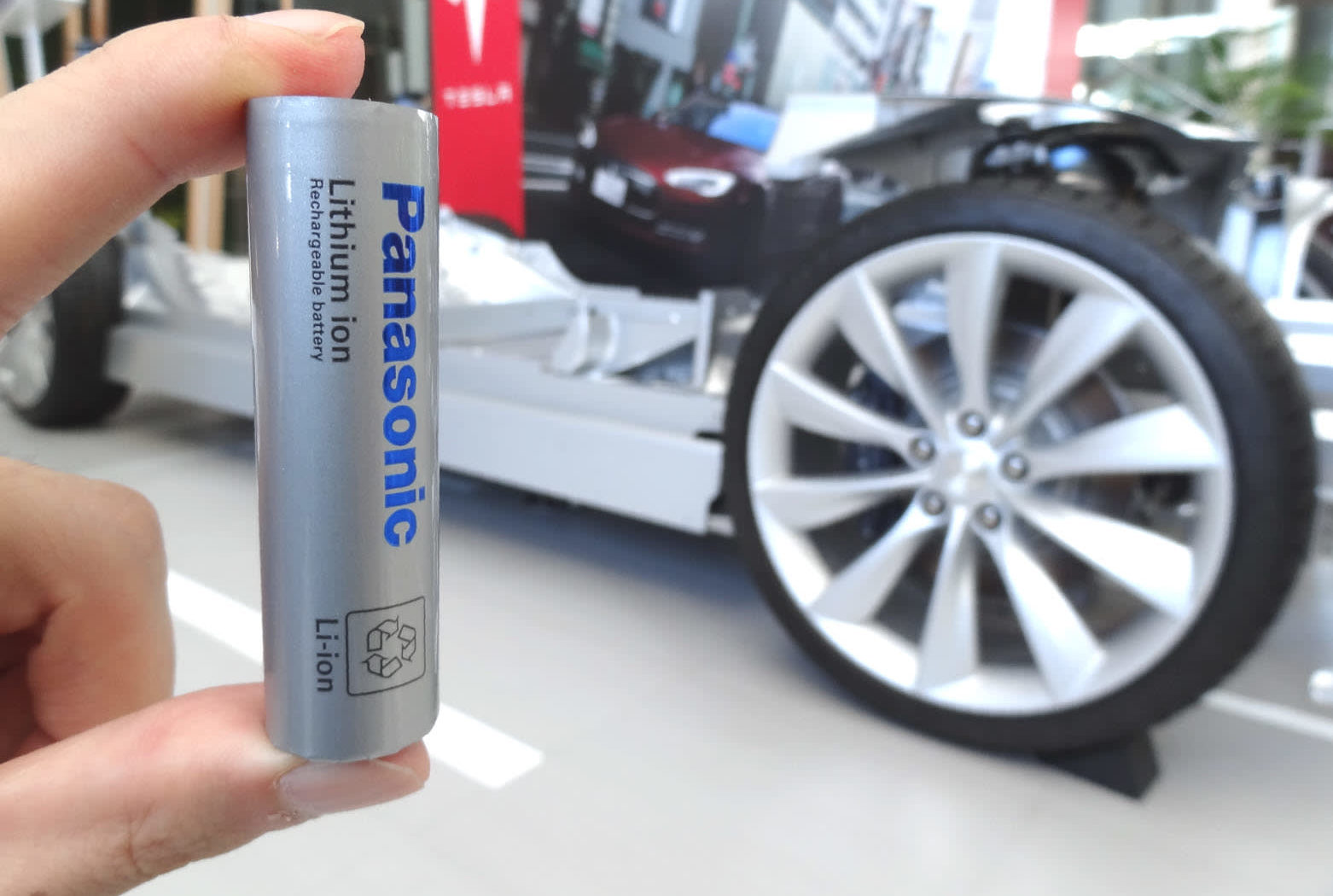
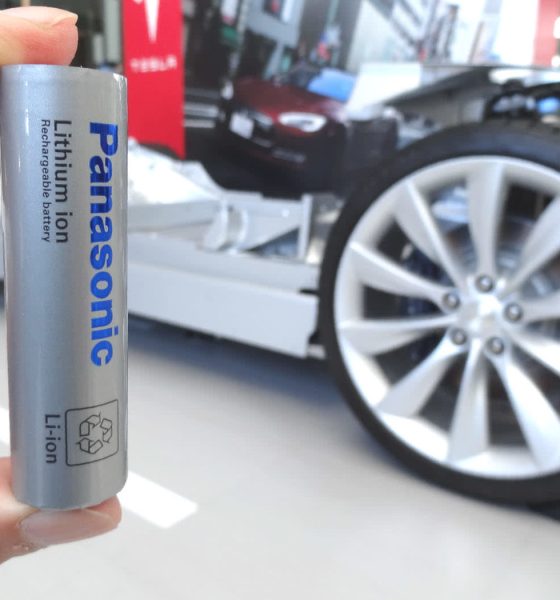
News
Tesla partner Panasonic’s US plans hint at possible Model S and X battery update
Tesla might be looking to expand its array of battery suppliers with the upcoming construction and operation of Gigafactory 3 in China, but its current exclusive battery supplier, Panasonic, is looking to double down on its partnership with the electric car maker nonetheless. In a recent statement to Japanese media, Panasonic announced that it plans to move its Tesla battery production facilities to the United States next year.
Panasonic already manufactures batteries for Tesla’s vehicles in the US in Gigafactory 1, though the cells it produces on the site are the 2170 cells being utilized for the Model 3. Tesla’s two flagship vehicles — the Model S and Model X — are still equipped with custom 18650 cells, which are produced by Panasonic in facilities located in Japan. Based on a report from the Nikkei Asian Review, these are the operations that the Japanese company will be bringing over to a “US-based unit starting next April.”
Considering that Panasonic is already producing 2170 cells for the Model 3 in Gigafactory 1, the company’s move of its Tesla battery production lines to a US-based facility could pave the way for a well-deserved and much-anticipated battery update for the Model S and X. The move, if any, provides Panasonic the opportunity to normalize its battery production for Tesla’s electric cars. It does not seem to be a strategic move for Panasonic, after all, to move its battery production operations to the United States to manufacture 18650 cells that are bound to be upgraded in the near future.
Tesla’s 18650 cells for the Model S and X, while not as energy-dense as the Model 3’s 2170 cells, still hold up well today. A recent range and efficiency test of the Jaguar I-PACE by German network nextmove, for example, showed that the Model X, which is equipped with 18650 cells, still seems to have superior battery tech than the newer electric crossover from the British carmaker. Elon Musk, for his part, lauded the Model 3’s 2170 cells in the third quarter earnings call, stating that the electric car currently stands as the “most energy efficient energy per mile electric vehicle out there.”
Tesla’s 2170 cells are hailed by industry experts as a difference-maker for the Silicon Valley-based company. Detroit veteran Sandy Munro, for one, noted after tearing down and analyzing the Model 3 that the electric car’s 2170 batteries are the best that he has seen to date. The potential of the 2170 cells could be seen in the Model 3 Performance’s recent Track Mode update, which allows the electric car to compete with the automotive industry’s best high-performance sedans on a closed circuit.
Elon Musk has noted that there is no such thing as a “full refresh” for its vehicles. In a statement on Twitter, Musk pointed out that Tesla’s electric cars are partially upgraded every month “as soon as a new subsystem is ready for production.” With this in mind, there seems to be little doubt that when the production of 2170 cells reaches a point where it is capable of supporting the Model S and X, Tesla will equip the vehicles with the larger, newer cells.
Both the Model S and Model X have defied the odds over the years, competing and even dominating their respective segments despite an abundance of skepticism and Tesla’s lack of experience in the auto industry. Considering that the vehicles are Tesla’s flagships, though, it stands to reason that both electric cars would be equipped with the best that the company has to offer — in terms of batteries, that pertains to the 2170 cells.

News
Tesla FSD (Supervised) is about to go on “widespread” release
In a comment last October, Elon Musk stated that FSD V14.2 is “for widespread use.”
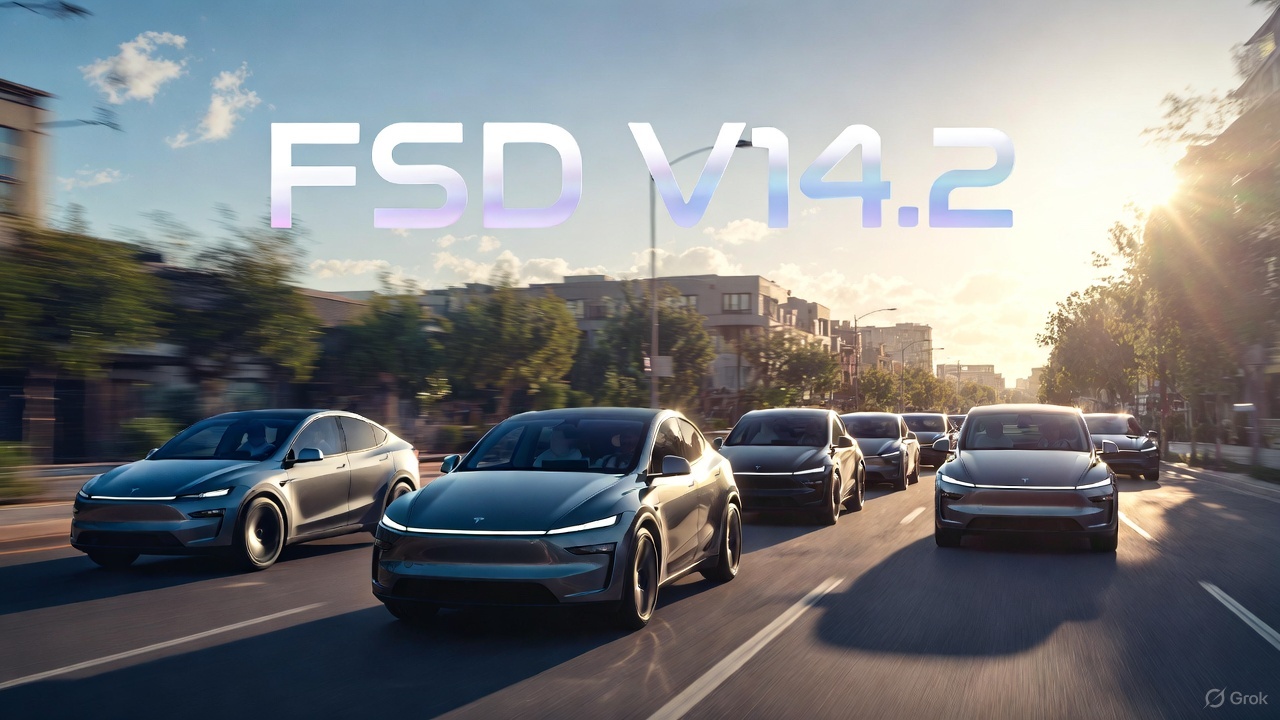
Tesla has begun rolling out Full Self-Driving (Supervised) V14.2, and with this, the wide release of the system could very well begin.
The update introduces a new high-resolution vision encoder, expanded emergency-vehicle handling, smarter routing, new parking options, and more refined driving behavior, among other improvements.
FSD V14.2 improvements
FSD (Supervised) V14.2’s release notes highlight a fully upgraded neural-network vision encoder capable of reading higher-resolution features, giving the system improved awareness of emergency vehicles, road obstacles, and even human gestures. Tesla also expanded its emergency-vehicle protocols, adding controlled pull-overs and yielding behavior for police cars, fire trucks, and ambulances, among others.
A deeper integration of navigation and routing into the vision network now allows the system to respond to blocked roads or detours in real time. The update also enhances decision-making in several complex scenarios, including unprotected turns, lane changes, vehicle cut-ins, and interactions with school buses. All in all, these improvements should help FSD (Supervised) V14.2 perform in a very smooth and comfortable manner.
Elon Musk’s predicted wide release
The significance of V14.2 grows when paired with Elon Musk’s comments from October. While responding to FSD tester AI DRIVR, who praised V14.1.2 for fixing “95% of indecisive lane changes and braking” and who noted that it was time for FSD to go on wide release, Musk stated that “14.2 for widespread use.”
FSD V14 has so far received a substantial amount of positive reviews from Tesla owners, many of whom have stated that the system now drives better than some human drivers as it is confident, cautious, and considerate at the same time. With V14.2 now rolling out, it remains to be seen if the update also makes it to the company’s wide FSD fleet, which is still populated by a large number of HW3 vehicles.
News
Tesla FSD V14.2 starts rolling out to initial batch of vehicles
It would likely only be a matter of time before FSD V14.2 videos are posted and shared on social media.
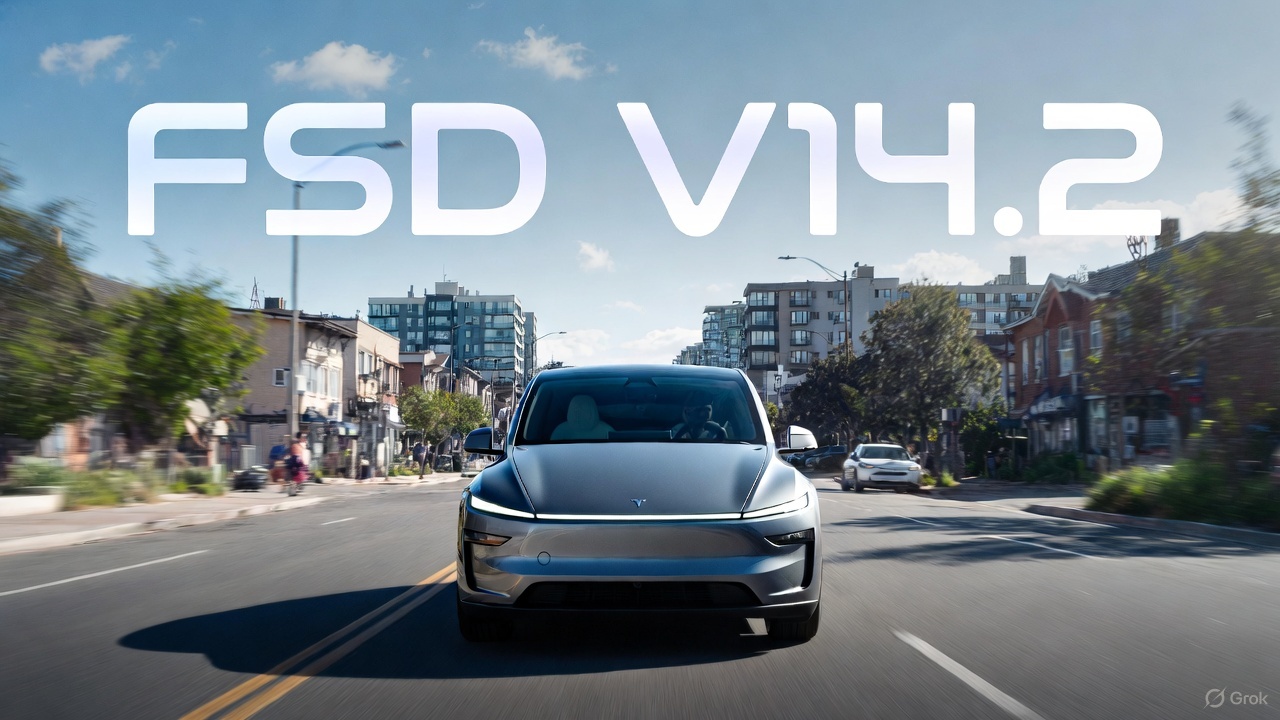
Tesla has begun pushing Full Self-Driving (Supervised) v14.2 to its initial batch of vehicles. The update was initially observed by Tesla owners and veteran FSD users on social media platform X on Friday.
So far, reports of the update have been shared by Model Y owners in California whose vehicles are equipped with the company’s AI4 hardware, though it would not be surprising if more Tesla owners across the country receive the update as well.
Based on the release notes of the update, key improvements in FSD V14.2 include a revamped neural network for better detection of emergency vehicles, obstacles, and human gestures, as well as options to select arrival spots.
It would likely only be a matter of time before FSD V14.2 videos are posted and shared on social media.
Following are the release notes of FSD (Supervised) V14.2, as shared on X by longtime FSD tester Whole Mars Catalog.
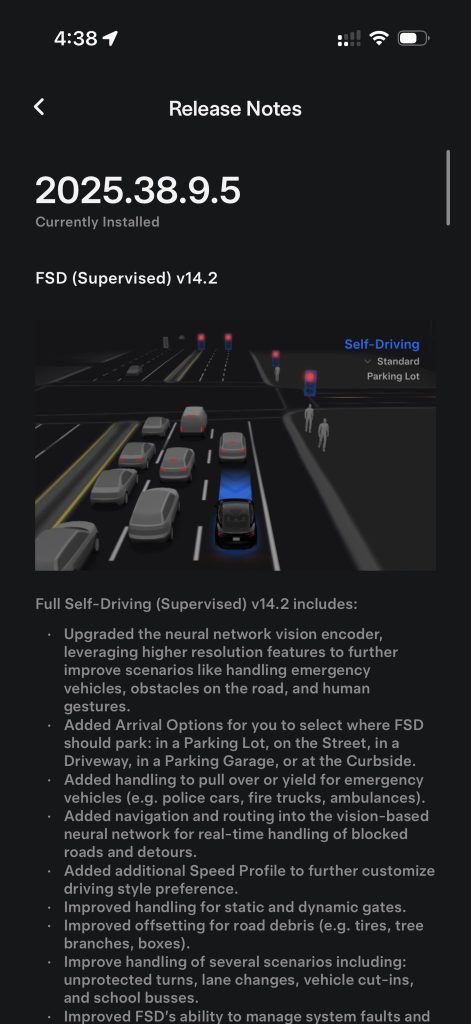
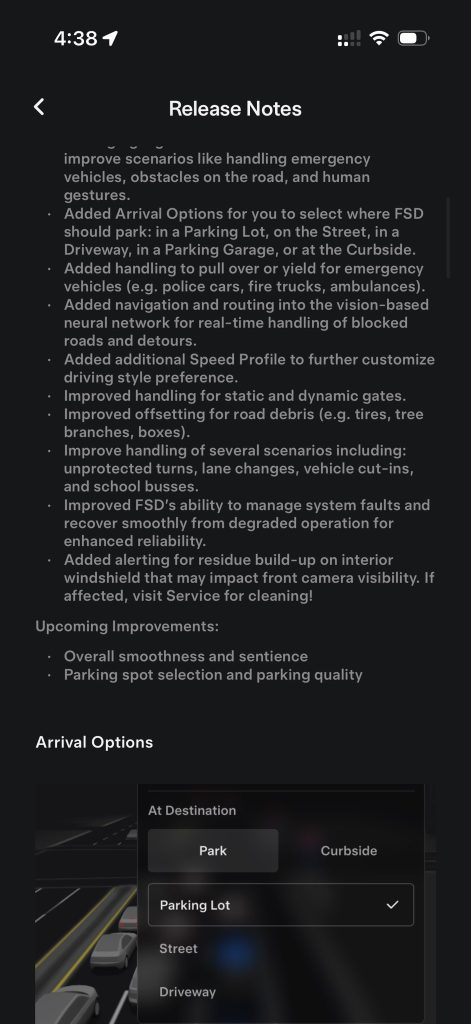
Release Notes
2025.38.9.5
Currently Installed
FSD (Supervised) v14.2
Full Self-Driving (Supervised) v14.2 includes:
- Upgraded the neural network vision encoder, leveraging higher resolution features to further improve scenarios like handling emergency vehicles, obstacles on the road, and human gestures.
- Added Arrival Options for you to select where FSD should park: in a Parking Lot, on the Street, in a Driveway, in a Parking Garage, or at the Curbside.
- Added handling to pull over or yield for emergency vehicles (e.g. police cars, fire trucks, ambulances.
- Added navigation and routing into the vision-based neural network for real-time handling of blocked roads and detours.
- Added additional Speed Profile to further customize driving style preference.
- Improved handling for static and dynamic gates.
- Improved offsetting for road debris (e.g. tires, tree branches, boxes).
- Improve handling of several scenarios including: unprotected turns, lane changes, vehicle cut-ins, and school busses.
- Improved FSD’s ability to manage system faults and improve scenarios like handling emergency vehicles, obstacles on the road, and human gestures.
- Added Arrival Options for you to select where FSD should park: in a Parking Lot, on the Street, in a Driveway, in a Parking Garage, or at the Curbside.
- Added handling to pull over or yield for emergency vehicles (e.g. police cars, fire trucks, ambulances).
- Added navigation and routing into the vision-based neural network for real-time handling of blocked roads and detours.
- Added additional Speed Profile to further customize driving style preference.
- Improved handling for static and dynamic gates.
- Improved offsetting for road debris (e.g. tires, tree branches, boxes).
- Improve handling of several scenarios, including unprotected turns, lane changes, vehicle cut-ins, and school buses.
- Improved FSD’s ability to manage system faults and recover smoothly from degraded operation for enhanced reliability.
- Added alerting for residue build-up on interior windshield that may impact front camera visibility. If affected, visit Service for cleaning!
Upcoming Improvements:
- Overall smoothness and sentience
- Parking spot selection and parking quality
News
Tesla Model X lost 400 pounds thanks to these changes
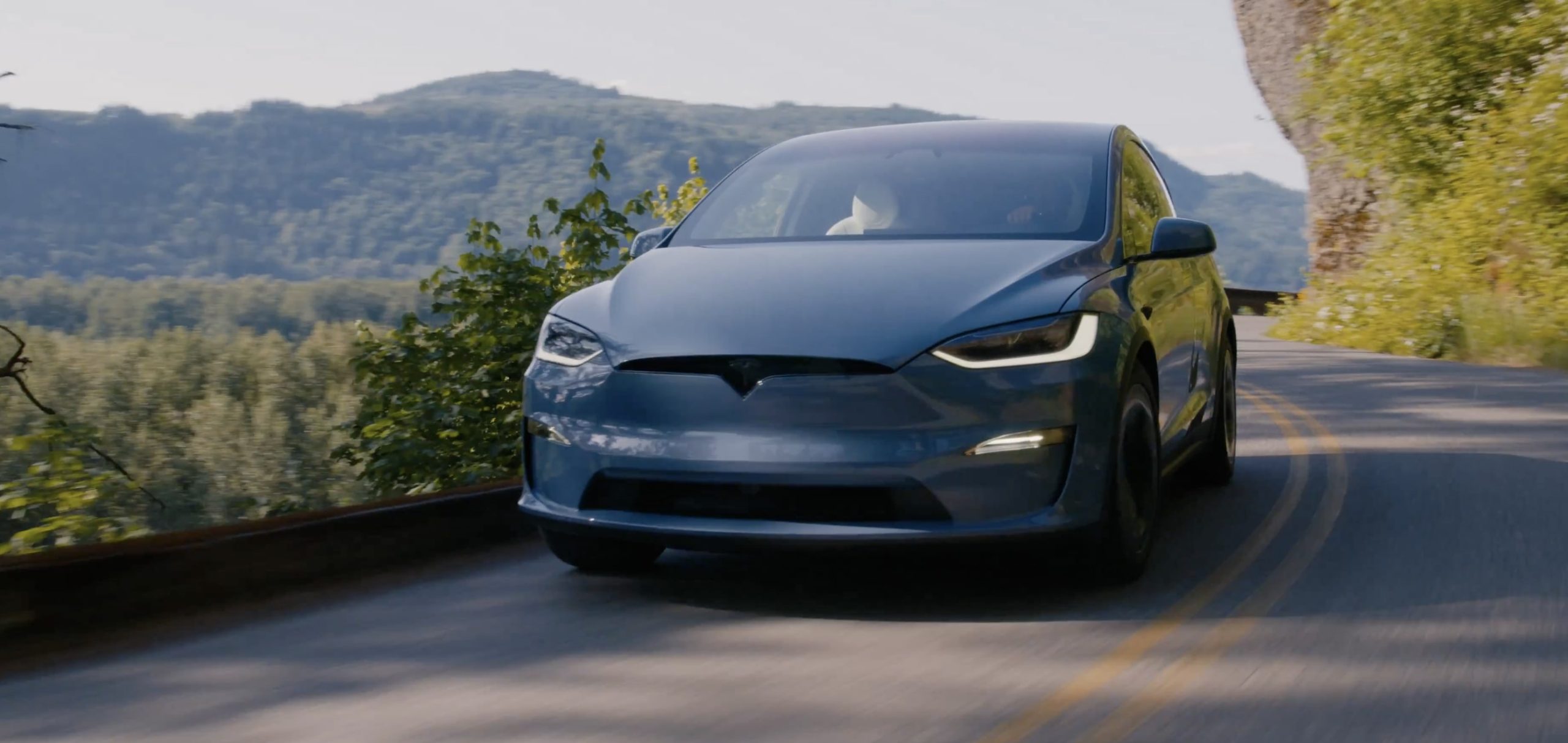
The Tesla Model X has always been one of the company’s most loved vehicles, despite its low sales figures, which can be attributed to its high price tag.
However, the Model X has been a signature item on Tesla’s menu of cars, most notably recognized by its Falcon Wing Doors, which are aware of its surroundings and open according to what’s around it.
But recent improvements to the Model X were looking slim to none, but it appears most of the fixes actually happened under the body, at least according to Tesla’s Vice President of Powertrain, Lars Moravy.
In a recent interview with Car and Driver, Moravy detailed all of the changes to the 2026 iteration of the vehicle, which was about 400 pounds lighter than it was originally. The biggest change is a modification with the rear motor, switching from an induction-type motor to a permanent-magnet design and optimizing the half-shafts, which shed about 100 pounds.
Tesla also got “almost 80 pounds out of the interior bits and pieces,” which “included making parts thinner, different manufacturing process choices, and incorporating airbag-deployment requirements into the headliner fabric,” the report said.
Additionally, the standard five-passenger, bench seat configuration saved 50 pounds by ditching pedestal mounting. This also helped with practicality, as it helped the seat fold flat. Engineers at Tesla also saved 44 pounds from the high-voltage wiring through optimizing the wiring from the charge-port DC/DC converter and switching from copper to aluminum wiring.
Tesla makes a decision on the future of its flagship Model S and Model X
Tesla also simplified the cooling system by reducing the number of radiators. It also incorporated Nürburgring cooling requirements for the Plaid variant, which saved nearly 30 pounds.
Many Tesla fans will be familiar with the megacastings, manufactured in-house by presses from IDRA, which also saves more than 20 pounds and boosts torsional stiffness by around 10 percent. Tweaks to the suspension also saved 10 pounds.
People were truly disappointed with what Tesla did with the Model S and Model X, arguing that the cars needed a more severe exterior overhaul, which might be true. However, Tesla really did a lot to reduce the weight of the vehicle, which helps increase range and efficiency. According to Grok, every 200 pounds removed adds between 7 and 15 percent to range estimations.
This makes sense considering the range estimations both increased by 7 percent from the Model X’s 2025 configuration to the 2026 builds. Range increased on the All-Wheel-Drive trim from 329 miles to 352 miles, while the Plaid went from 314 miles to 335 miles.








